Slab City is a community in the Sonoran Desert located in Imperial County, California about three hours east of Los Angeles within the Badlands. Part utopia, part fallout zone of contemporary mainstream culture, its residents—or ‘Slabbers’ as they refer to themselves—live their lives out on the American fringe.
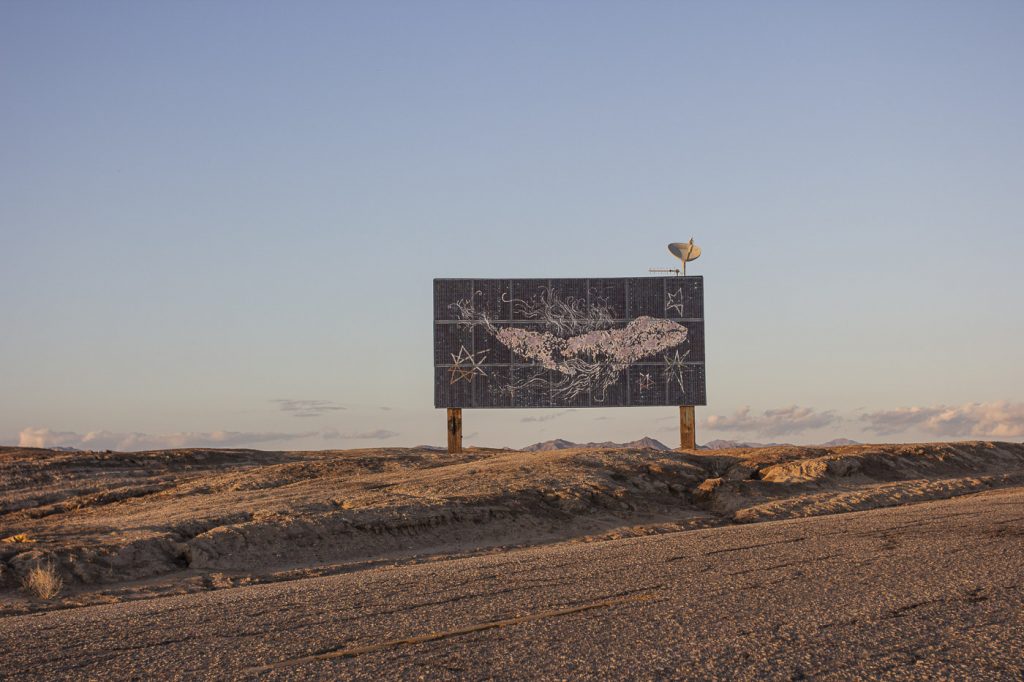
No entrance fees or formal indoctrination processes greet one upon arrival at Slab, and the community embraces a sense of lawlessness due to its remote location and lack of modern infrastructure. There is no running water, power lines, sewage service, or trash pickup in this desert metropolis. It operates provisionally and has, in effect, become an ideal breeding ground for innovation. Despite Slab’s unregulated state of affairs, the unique openness of both the site and its residents offers an array of possibilities for artists and other transients who end up there, or pass-through for a period with an intent to make something.
Having made the trip over to Slab City once before, Jake Cruzen recognized this potential and began planning a large-scale installation across from Leonard Knight’s legendary paint-poured adobe mound ‘Salvation Mountain’.
The Los Angeles-based painter’s latest and most monumental work—a freestanding mural depicting a psychedelically-stylized grey whale, titled ‘Wishbather’ begun in 2017—ethereally floats like a mirage in the distance. With help from some longer-term Slabbers, Cruzen engineered the painting’s support structure to serve additional functions specific to the community’s needs. Made up of several solar panels, it collects and stores renewable power to amplify and extend Wi-Fi with a cell phone signal repeater, and transmits silent radio waves to the melody of a whale song distress signal. Directed upward at the sky and into outer space, it aims for the heavens.
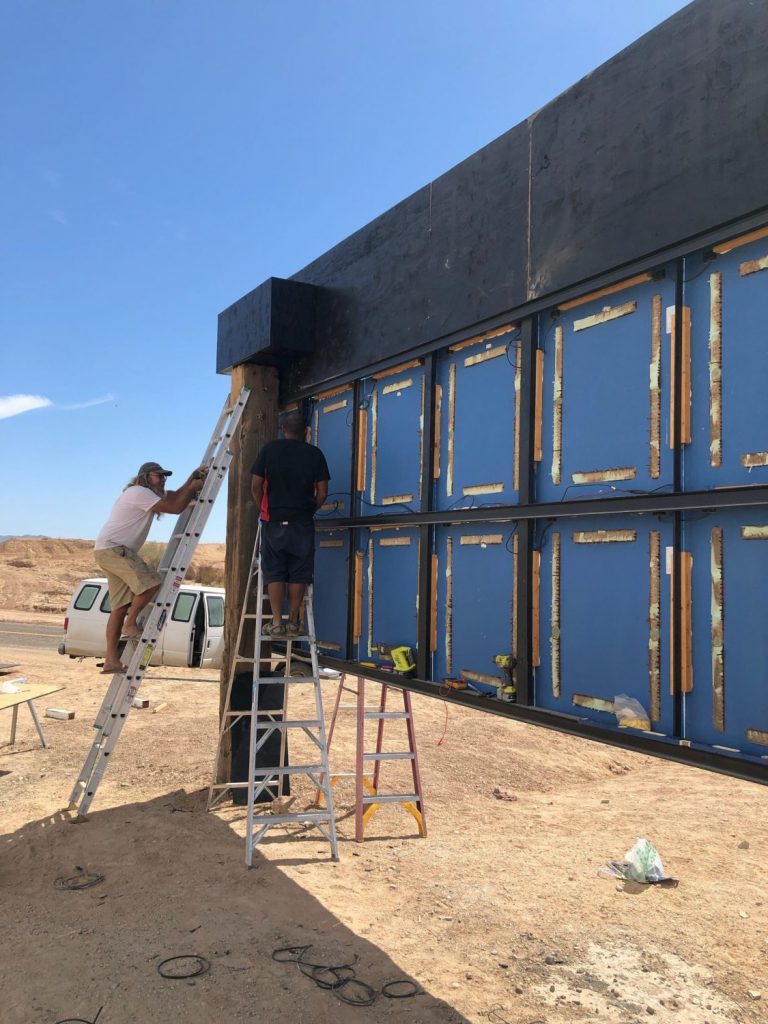
According to anarchist author Hakim Bey, a temporary autonomous zone is a liberated area “of land, time or imagination” where one can live for something, not only or always—in a most profoundly general sense—against or at the mercy of such looming power structures. It is a space where new ways of being human together can be experimented with and explored. Within these rare zones, we gain the potential to become creators of the art of everyday life. Respect becomes a form of currency, mutual understanding renders the rigid norm of contractual agreements obsolete, and a sense of cooperative duty fuels a desire in a particular ‘zone’s’ inhabitants to give back to the community of which they are a part. Such modes of cooperative living propel the impetus for artists to tackle ambitious, lovingly laborious feats with a sense of sustained commitment—and make work that is generously expressive, passionately forthcoming, and conceptually unlocked.
Cruzen spoke over the phone to discuss the conditions under which this sea mammalian-themed dream of his was realized as an integrated reality, characteristically marked with a “by any means necessary” grit.
**I’m interested in how ‘Wishbather’ came to be from a logistical standpoint. How did you manage to engineer the support structure, and who from Slab City helped with the project?
JC: Slab City is a small enough community where if a task is presented and it seems like a positive or beneficial thing for them to spend time on, multiple people sort of tackle it together. The first friend I made at the Slabs was Solar Mike, and Mike introduced me to Billy X, White Witch, and Mike Virgil. This is the team I worked with for a year and a half. I was also mentoring a teenager, Quinn Cameron, during this whole process. He and a few of his friends would come out and work with me as collaborators. The support came really naturally.
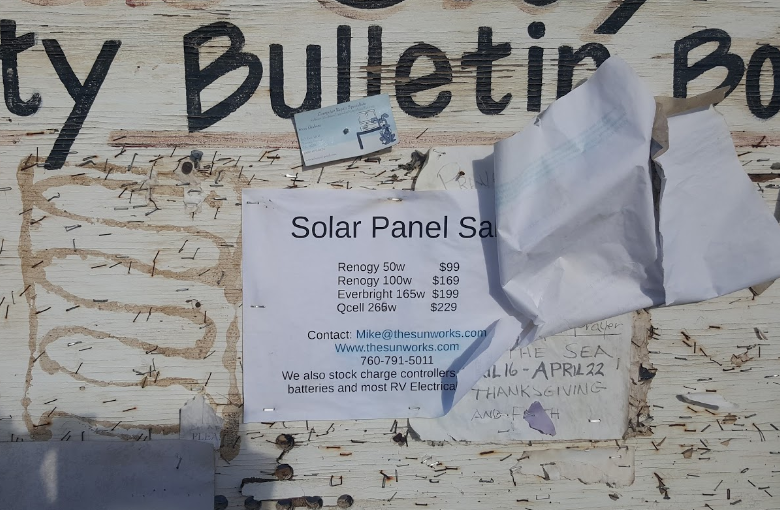
Imagine a grid of solar panels held in place by a single steel frame that stands on a pair of railroad beams cemented into the ground. Billy X is the engineer who worked with us on designing the structure and oversaw the majority of the building process. In the beginning, it was a real challenge to make sure everything we would be doing was safe and secure in the long term, especially considering the heat and high-speed winds that come through the area.
Virgil has an incredible ability to work with DIY technology. It’s unreal. Having done transmissions for the military in the past, he executed most of the piece’s technical components, including installing the main satellite and what’s called a klystron, or a high-power microwave vacuum tube that’s used to amplify frequencies. How it works is there’s a programmed microwave signal that gets sent into space and then carried outward via the hydrogen band. It took several tries to get the frequency where it wouldn’t interfere with air traffic.
Getting funding wasn’t easy. Half of it came out of my own pocket, though we did get super generous support from the director James Cameron and his wife, environmental advocate Suzy Amis Cameron, as well as MUSE School in Calabasas. Kids from MUSE also came to Slab and actually painted parts of ‘Wishbather’ with me too. It really ended up bringing different worlds together, which is something that felt really good to play a role in.
It was also like a science experiment. One of the major concerns we had going into it was the question of what kind of paint to use, considering the counterproductive effect most types might have on a surface’s ability to absorb light. The kids and I experimented with a bunch of different paints and nail polishes and ended up finding something aluminum-based that manages to hold the incoming sunlight. It was a super-cool experience because they had a power meter on the solar panels and we were trying all these different paints, and you were able to see in real-time how each sample was interfering with or optimizing the panels’ ability to absorb light.

**Is the whale call audible?
JC: No, so it’s actually a silent frequency—a voice for whatever hears silence. In this case, the method used in sending a message to space was inspired by the way whale vocalizations travel and become amplified across vast distances of ocean. It’s like putting a paper boat in a natural stream. Low-frequency sounds can travel 1000 miles underwater, while totally inaudible to the human ear. The range a frequency that humans can pick up on and hear has a less expansive radius of just a few miles.
**It almost seems like the people you ended up working with kind of gravitated toward the project on their own over the course of its process.
JC: I suppose this thing was happening that just felt like it made a lot of sense. It was honestly the best large-scale project I’ve ever taken on. And I think it had a lot to do with the specific people I was working with. The Slabbers have learned to live surprisingly smart, high-quality, mindful lives with very little.
**I would imagine Slab City’s population to be quite varied too as far as the current residents’ backgrounds, or the lives some have lived pre-Slab. But the conditions seem severe enough to warrant a heightened awareness of coexistence as a tool for survival. Based on your accounts and my own additional, remote research on this anomalous place, its virtual ‘lawlessness” is emphasized and foregrounded as the defining aspect from the outside looking in.
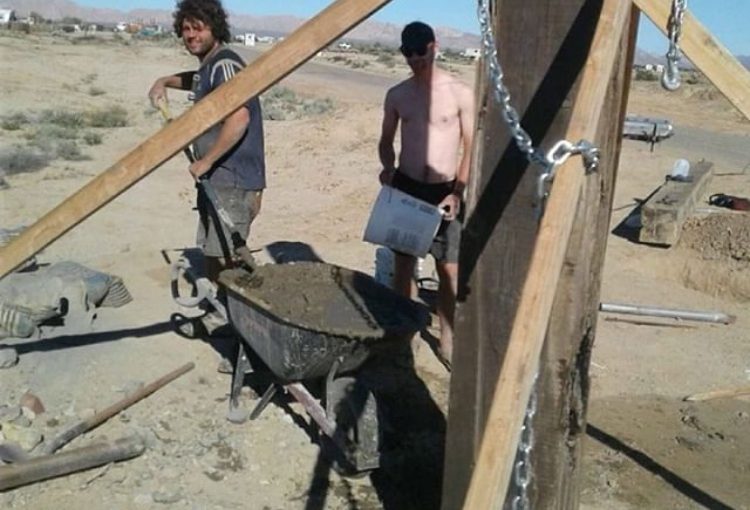
JC: Yeah, It’s been portrayed as a kind of contemporary pirate territory. And I suppose you don’t know what could happen to you. I mean, there’s some potential danger, but in my experience, everyone is there for a different reason, which is great and helps bypass any false inklings that may lead one to preemptively criminalize a person upon meeting them. I think that’s why my family and I became so close to them.
There is a pervasive appearance of violence in Slab City—violence as a byproduct of action. Things have been moved around at some point by whoever. So there’s dust and broken fragments, but also, behind that, a feeling of hopefulness and agency. I think there’s also something to be said for laying your hand. There’s a very hands-on sensibility to Slab as a place, it’s broken in or something. One can witness the intentions once at work, which seem to have prompted actions that put them there.
**It’s like some sort of ground-level stage for events or actions to take place on. The visible contributions inevitably have implications in relation to their environment, or a degree of residual affect, at the very least. I find your characterization of this as violent to be interesting. It resonates as accurate, but might these transparent, available clues on the other hand recall moments of care or carefulness?
JC: Sometimes the arrangements—these provisional sculptures or plaything remnants—are impactful due to this transparency of process, rather than their significance as a formal, final product. So, yeah, by violence, I think I’m leaning towards an interpretation of that word to mean the consequence or trace of an action without concern for any desired visual effect. Something bare, uncloaked. I’ve always been attracted to a certain temperature or a specific way of handling things where imagination meets reality and what that point of convergence ends up looking like.

**You’ve explained the practical aspects of the project, as well as how you managed to adapt to the site and conditions which came along with it, but I also want to touch on and discuss the qualities more intrinsic to the piece itself. It seems in keeping with the style I’ve seen deployed in other, past works of yours.
JC: I think my style of representation reflects a less formal or organized upbringing. I didn’t learn about any of the rules or conventions of painting until I went to graduate school. When I finally did go, I still wasn’t looking at much art. I came in having studied sociology and then went on to focus on art theory. I didn’t even take studio classes. Jimmie Durham, Robert Ryman, and Pope.L. were the first artists I really got into.
I also wanted to continue this lineage that I feel has been consistent in my work, which is an attitude towards painting I’d characterize as realistic, not in the sense of accurate rendering or photorealism, but existing laterally or on the same plane as the rest of my life. I think that you and I have had conversations in the past where we’ve acknowledged a common appreciation, or perhaps imperative, to maintain a very ‘regular’ sensibility. And there’s absolutely no shame in ‘regular’. I remember that being a pretty big breakthrough for me when I first started painting.
I’d use whatever was around to cut the paint and water it down—spit from chewing tobacco, water, wine—I mean, anything my girlfriend might have, and then develop it that way. It always felt comfortable and appropriately regular. I never approached it with a heavy load of ideas about material references, or a desire to encode anything exceptionally profound. It’s more like a household by its very makeup. In short, the way it looks is the outcome of cooperation.
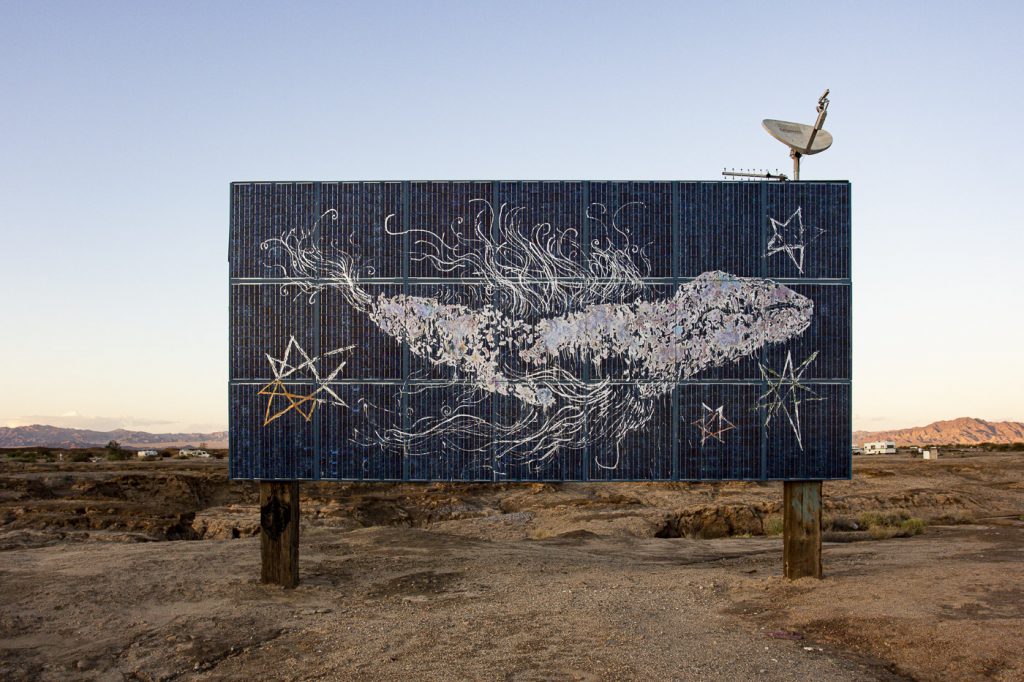
I think this quality of the work defies popular aesthetic values, and mixing that disruption with the gravity of real life can make it a tough pill to swallow. I believe the space between imagination and reality is unsettling, and presents a subtle discomfort in the person dwelling on that threshold. It’s like when something familiar appears in your dream but at a distorted scale, maybe a little helicopter with your family inside. I think we carry a deep-seated fear of our potential to be violent in the experienced semi-conscious space of our imagined realities.
That said, ‘Wishbather’ is the product of a rare convergence of people who come from different walks of life, laughing like mad men in the heat. A laugh that hard feels like letting go of an unwanted brick in your chest.**
Jake Cruzen’s solar-powered mural at Slab City is currently featured online at Mother Culture.













